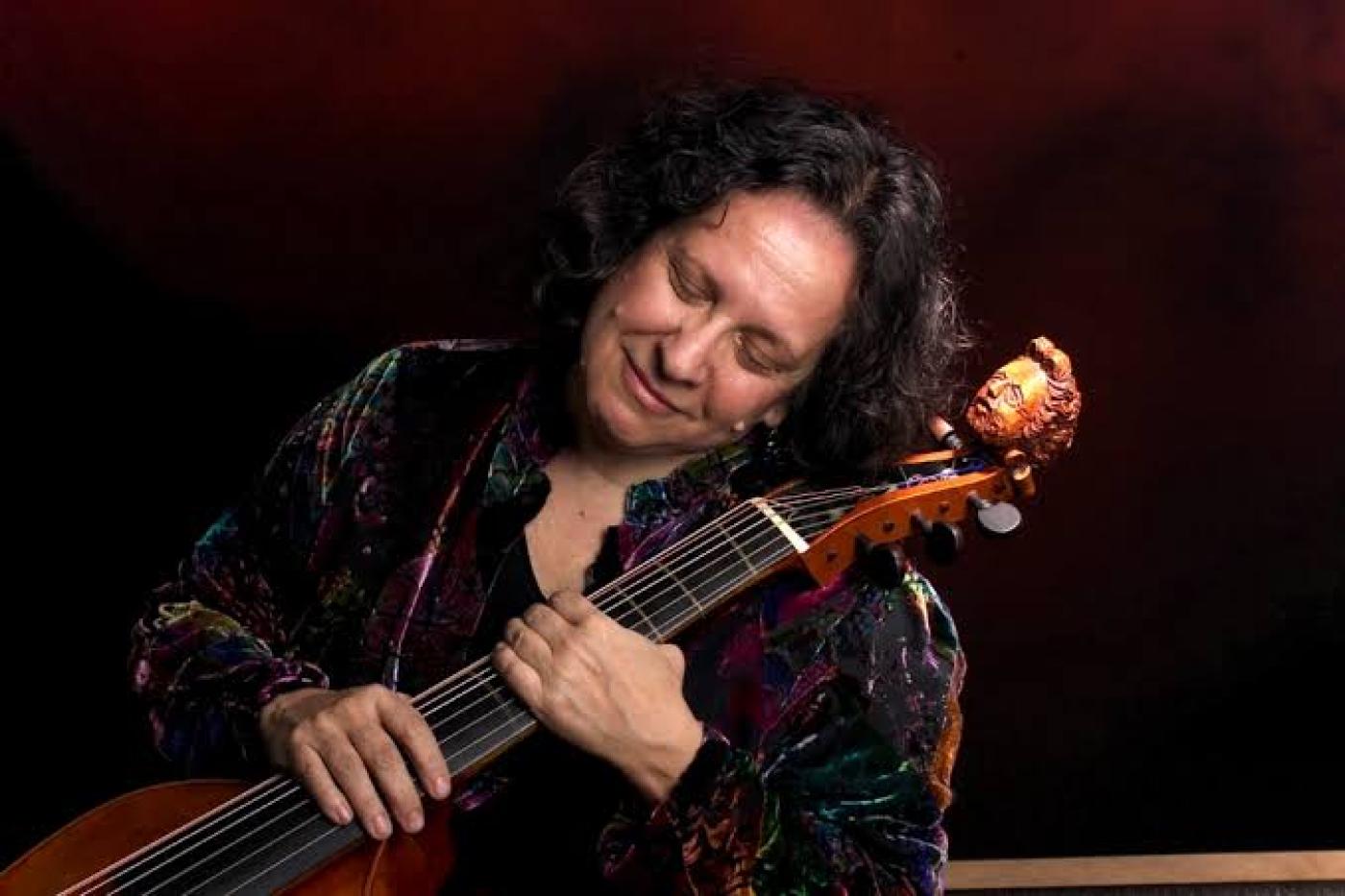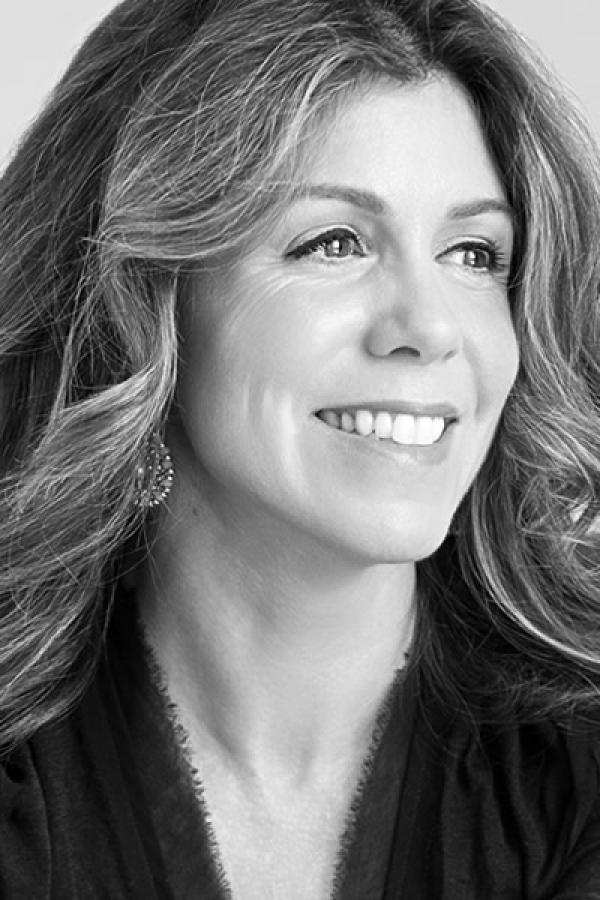LAS MÍSTICAS DE MÉXICO (The Women Mystics of Mexico) is described by its creators as “an immersive music and art installation” that invites us on a “journey through the mystical creative expressions of four centuries of Mexican women artists.”
Directed by Maribeth Diggle and Timothy Nelson and produced by IN Series in collaboration with the Mexican Cultural Institute, the experience draws on work by Anna Deeny Morales and brings together the talents of Abigail Hoke-Brady, Marta Pérez García, and the Children’s Chorus of Washington with IN Series vocalists. The program includes new music composed by Allison Sniffen.
Dr. Tina Chancey of HESPERUS is the musical director for LAS MÍSTICAS DE MÉXICO. I spoke with her about this event and her role in it.
Evan Keely: You are — among many other things — a virtuoso on medieval fiddles, viola da gamba and the five-stringed pardessus de viole. You’re also an arranger, a writer, an educator, and a scholar (with a PhD in Musicology, Music Technology, and Women’s Studies); you have performed in many ensembles — not only HESPERUS, but Trio Sefardi, the Folger Consort, and the neo-medieval folk-rock band Blackmore’s Night, to name a few; you’re conversant in musical styles from medieval European and Old Time to jazz and Irish Fiddle, and you’ve delved deeply into musical explorations of silent film. Sorry-not-sorry if this chagrins your modesty, but you really seem like the ideal choice to be the music director of a multimedia art installation that explores Mexican women artists such as Sor Juana Inés de la Cruz (1648-1695) and Frida Kahlo (1907-1954), inviting participants into an experience built upon a medieval music drama (brought to life anew by Dr. Anna Deeny Morales). How did you get involved in this project?
Tina Chancey: You know, basically, I’m an instrument jock with a passion for all sorts of music, written and improvised, from medieval chant to Sephardic romanzas and jazz standards. Tim Nelson and I are old friends from his Peabody days, and when he got in touch about this project I said yes right away. What a great opportunity to become more familiar with Latin American traditional music!
EK: You’re a virtuoso on instruments that perhaps don’t have quite as many players in the world as, say, the B-flat clarinet does. What instruments will we hear in this experience? What sounds are you trying to evoke as you direct this musical performance?
TC: The viola da gamba became unfashionable through no fault of its own; once composers were seduced by the timbral opportunities of the brilliant, noisy orchestra, softer instruments didn’t have a chance. In this performance you’ll get to hear the traits that made the viol the bowed string instrument of choice for more than three centuries; sensitivity, timbral variety, nuanced bowing, resonance, wide range that gives it multi-functionality. I’m also playing the vielle, ancestor of both the viol and its cousin, the modern violin. Flexible in form and function, the vielle can be played on the shoulder or between the knees; it has four-six strings depending on the whim of the builder (and the medieval picture that they’re copying), and can be tuned in many combinations of fourths and fifths, depending on the mode of the piece it’s playing. These instruments give a full range of expression from plaintive to frenzied.
EK: I admit my knowledge of the artists featured in this installation is not advanced. (Lots for me to learn. I also admit I had to look up pardessus de viole. So much to discover!) What would be good things for a curious and interested person like myself to know before going into this experience?
TC: The 28 chants in the medieval music drama “The Slaughter of the Innocents” were originally in Latin, and told the story of Herod’s murder of all the young children in Bethlehem. Anna Deeny Morales didn’t translate the texts into English so much as re-imagine them in the larger context of the present-day disappearance of more than 100,000 Latin Americans, mostly women. In turn, this expanded significance changed the way we interpret the chant, which is now much more personal, emotional and immediate than its medieval ancestors.
EK: Questions about power and agency seem unavoidable when reflecting on an installation like this; its appearance during Women’s History Month certainly doesn’t strike me as mere coincidence. All the creators featured are women — “MÍSTICAS” is a feminine plural noun — and it appears most of those producing and creating this experience are women as well. IN Series describes mysticism in the context of LAS MÍSTICAS DE MÉXICO as “a transformative practice of radical love that seeks to challenge power”. What’s your take on this? What power is being challenged by this installation? And what power is being elevated? Who and what do you hope will be empowered by this exhibition? And what about this experience, in your view, might merit the enigmatic and fascinating label “mysticism”?
TC: What a great question! I don’t think I can give it the answer it deserves, though, since I wasn’t involved in this project’s conception, only in its birth. I can only say that I enjoy the multiple instances of jousting between power and love throughout the piece, on so many different levels. I also appreciate the intricate layers of meaning in the text, both spoken and sung; meaning that shifts as we and the audience drift through the performance space. The fact that we’re all in movement as we perform and listen, contributes to the ephemeral, mystical nature of the experience.
EK: This is, among many other things, a celebration of Mexican women’s contributions; México is an overarching theme. What is it about the “DE MÉXICO” aspect of this installation that you find especially interesting, challenging, and exciting?
TC: I find the music that we’re performing by Mexican women composers and performers Gabriela Ortiz, Maria Grever, Chavela Vargas and Toña la Negra, stimulating and quite moving.
EK: It certainly is a wonderful thing to go to a museum and look at paintings on the walls, but it’s my understanding that this will be an art installation quite different from that, combining lighting effects and projections, music, poetry, prose, and drama with visual art in a wide variety of styles. IN Series explains: “The audience will experience the work by moving freely through the space, weaving between the performers and the art.” Are there conflicts, contradictions, uncertainties expressed in the ideas and feelings in these artworks? Is there joy, humor, grief, anger, courage — and what else? What are some of the common themes that emerge amidst all these different sensory inputs and ideas?
TC: I would expect that in such a rich brew of ideas and concepts, that many different connections can be made, having much to do with the point of view of the beholder. Indeed, the way the event has been constructed, I would think that the beholder’s experience would change whenever they revisit the show. And isn’t that one big benefit of this kind of immersive event? That we provide an open door that the visitor can approach in their own time, in their own way, leading them to their own particular synthesis of elements.
EK: What are you hoping participants will experience? What are your goals and your dreams for the impact LAS MÍSTICAS DE MÉXICO might have?
TC: My particular goal is that our music acts as a catalyst for these multiple experiences, both universal and personal.
PBS PASSPORT
Stream tens of thousands of hours of your PBS and local favorites with WETA+ and PBS Passport whenever and wherever you want. Catch up on a single episode or binge-watch full seasons before they air on TV.

